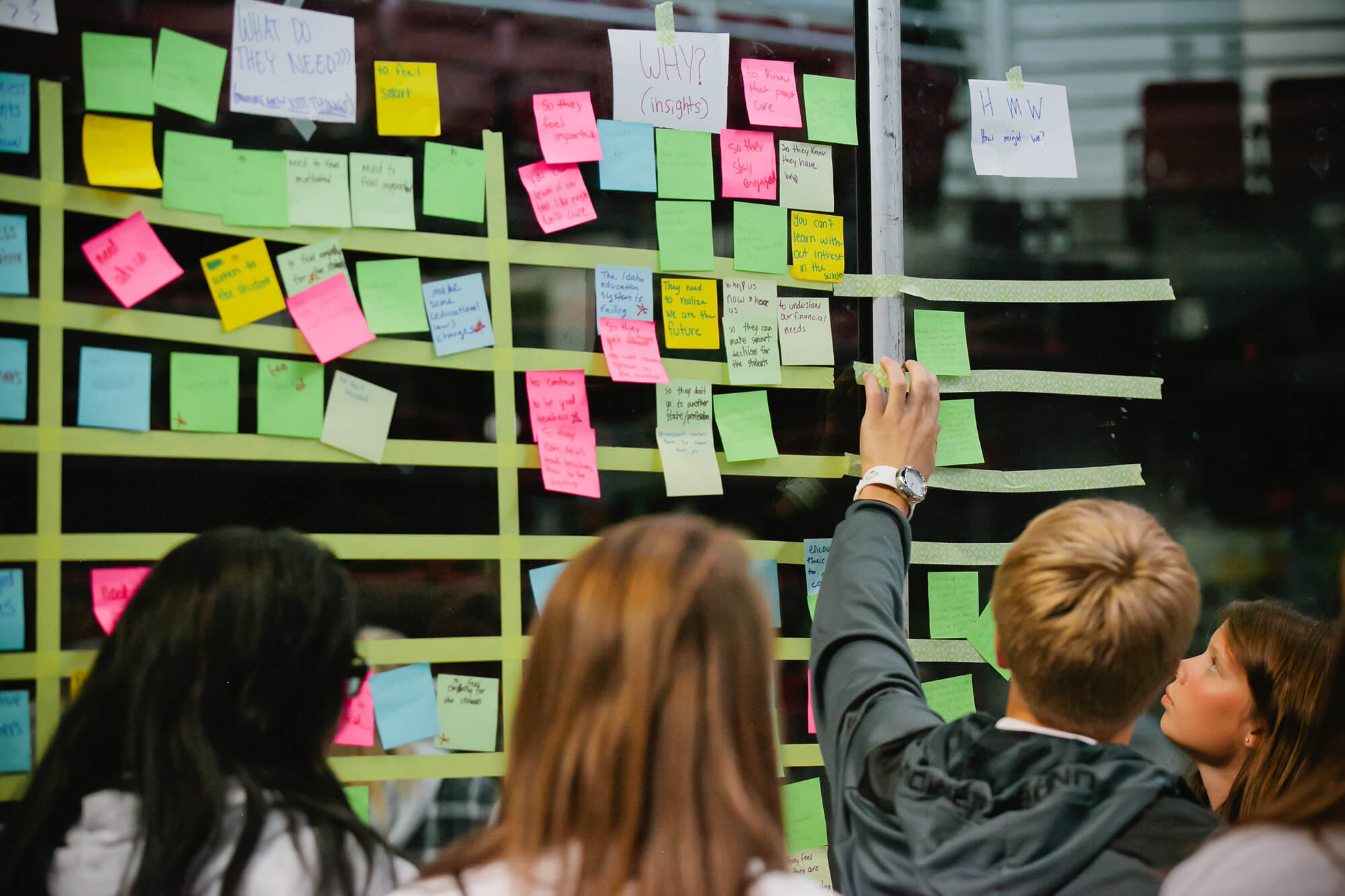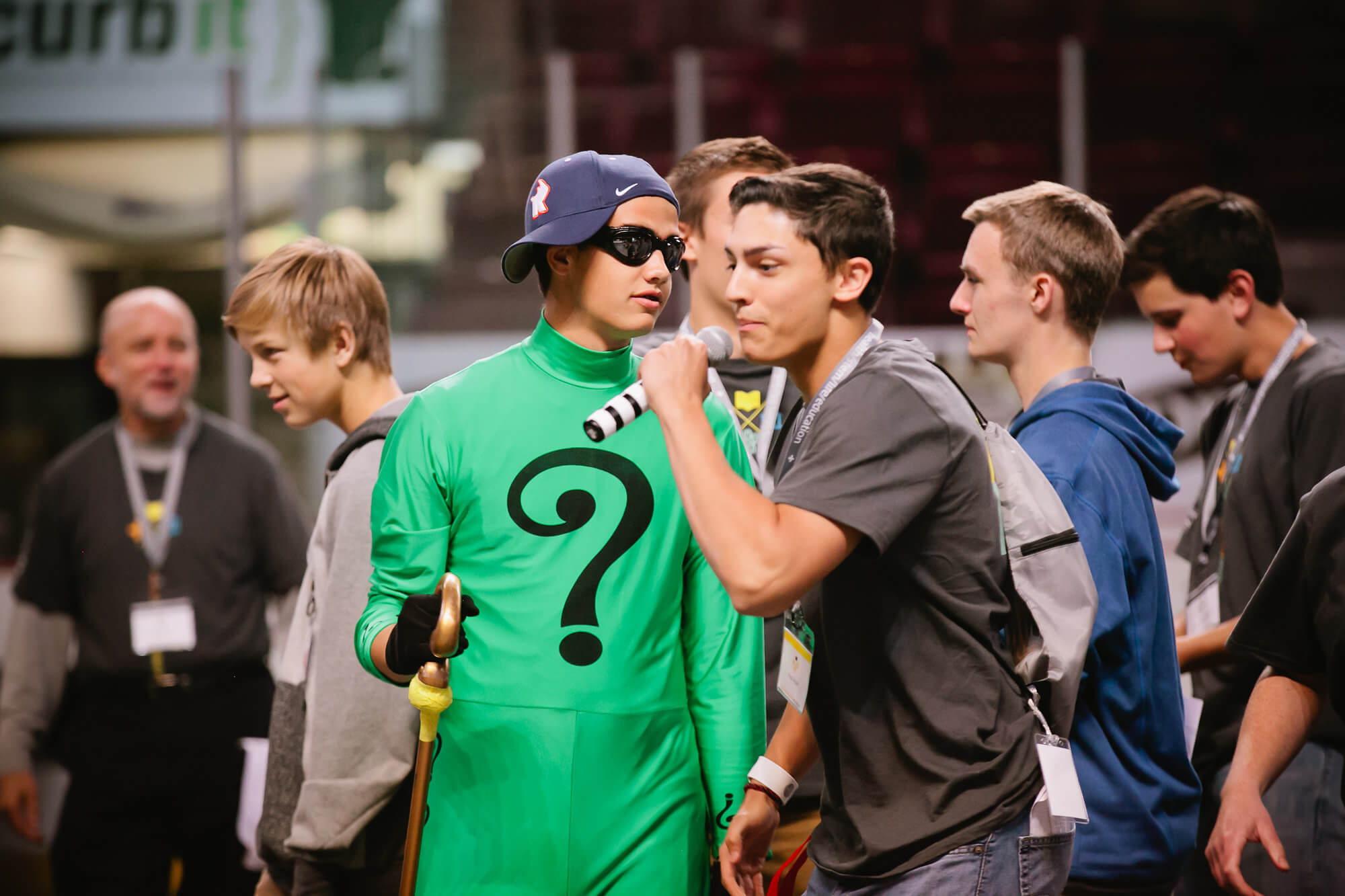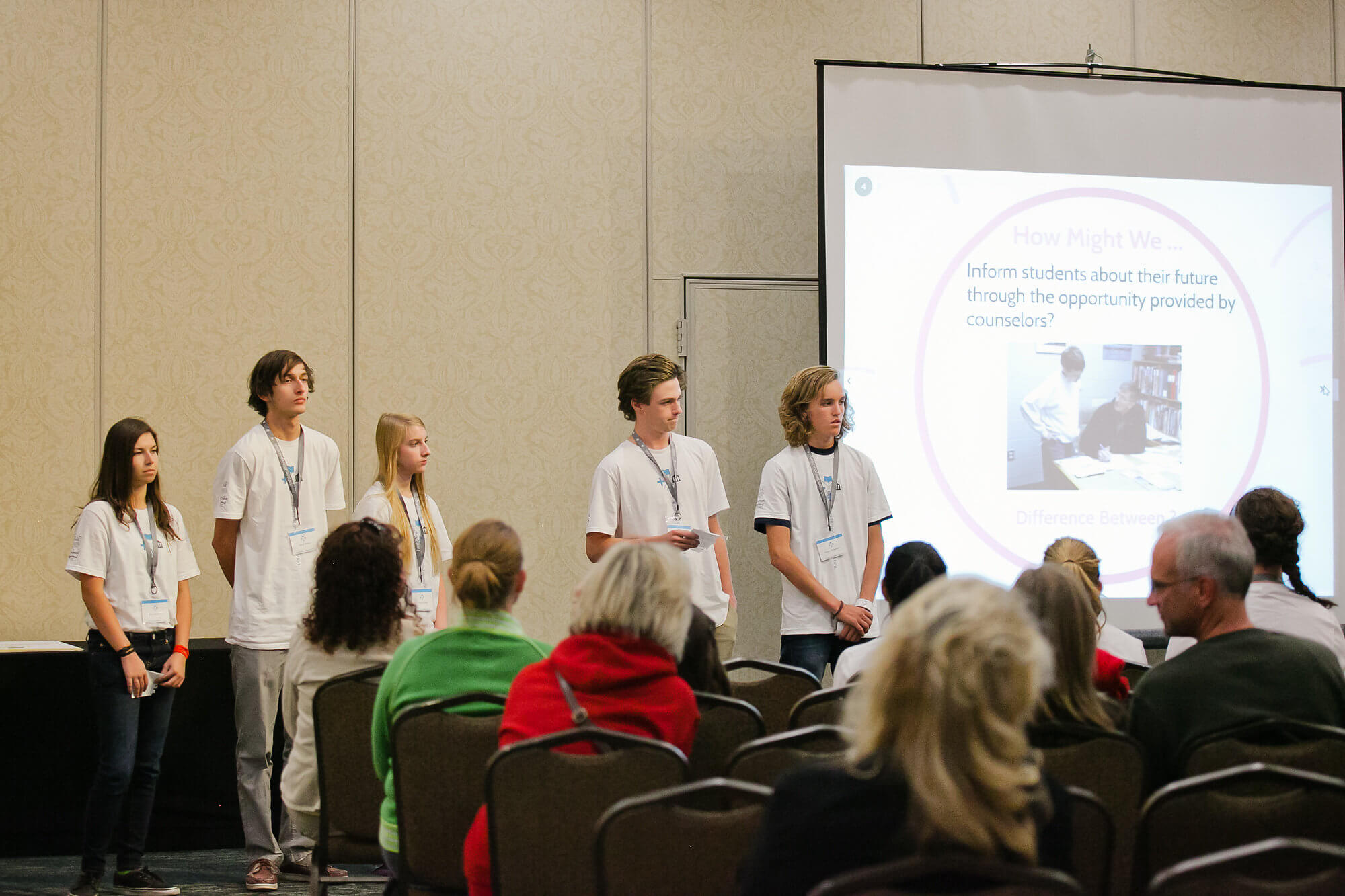





Need:
How might we give students an opportunity to share their voice on issues that impact them?
Solution:
The 24-Hour Think Challenge was a community conversation and design thinking challenge. The two-day event (October 2 & 3, 2014) engaged 153 students from 20+ high schools (209 students from 23 schools applied) across the Treasure Valley. The diverse group represented rural and urban schools, Go-On schools, and students representing the “forgotten 50.” Their challenge? To learn about, examine, and offer new ways to address big complex issues relating to education, life, STEM education and health.
We kicked off the event with ice-breaker exercises and a keynote speech from student voice advocate, Sam Levin, who set the stage. Following the opening, students were divided into teams for design thinking training (crash ups) based on Stanford University’s d.school curriculum. With training under their belt, we launched the clock with a call to action to “Do it differently” from 15-year-old entrepreneur Erik Finman, and One Stone student leadership.
For the next 24 hours, students worked through the design thinking stages of empathize, define, ideate, prototype, test in small groups. They were assisted by adult experts in the field as well as adult design thinking facilitators and the One Stone Think Challenge student planning team leaders.
At the conclusion of the 24 hours, the clock stopped and the students were off to the formal “Pitch” event, where they reported their findings and ideas. There were 30 different pitches, the majority from the largest group, education. One Stone engaged the students who wanted to continue to pursue their projects. Currently, we are incubating two of the ideas that emerged in the Solution Lab.
Impact:
Students came away from the event deeply impacted. On average, more than 90 percent of participants reported that the experience would be helpful in school and in other areas of their life, and that it increased their understanding of issues in the Treasure Valley. Additionally, all participants reported increases in 21st Century skills including empathy, creativity, collaboration, confidence, communication and leadership.


